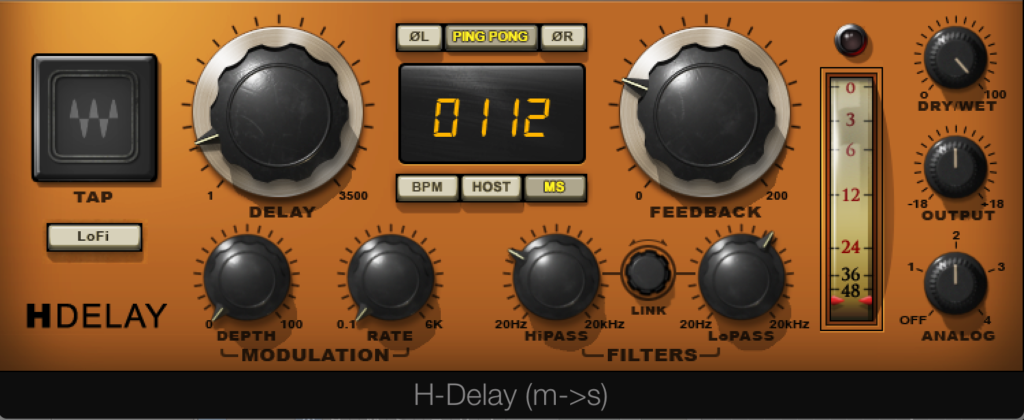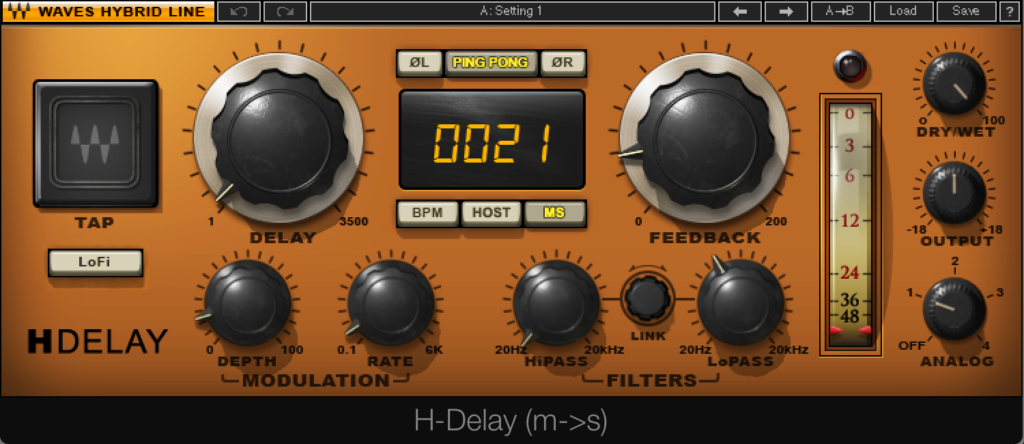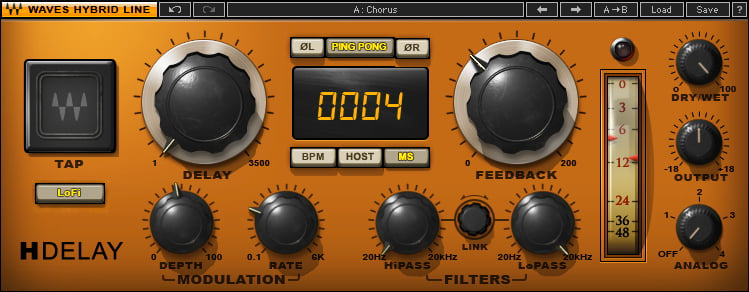Vocal Effects with Waves H-Delay
The Waves H-Delay is one of my most frequented effect plugins because of its simplicity and ease of use. It is also in the top 20 most-used effect plugins among the Splice community. The H-Delay comes from Waves’ Hybrid line of products and has the flexibility to produce filtering, phasing, flanging, slap-back, ping-pong, and tempo sync modulation all in one single plugin.
In this blogpost, I’ll show you some vocal effects you can create with the H-Delay in your productions. Because the plugin is so simple to use, it only takes seconds to dial in different settings.

Voice to verse—anywhere. With the addition of Splice Mic, you can instantly test and record ideas, explore genres, and unlock new creative possibilities, all from the Splice mobile app.
1. Classic Slap-back
The slap-back delay effect was made famous back in the early days of recorded music by artist such as Elvis Presley and John Lennon. To emulate the settings of a slap back delay is simple. Delay times usually run between 60-120ms and since it was done on a tape machine, using the H-Delay’s filters to filter out a little bit of highs would make the delay sound a little more realistic. A slap-back delay can be used to replace a reverb. I personally like using slap-back delays in mono, as it gives my vocal a little bit more energy, life and sparkle. In this example our settings were:
Time: 121ms / LoPass: 1.47K / Feedback: 54
2. Classic Slap-Back with Ping Pong Turned On

This effect is a slight modification of the previous one as I wanted to use the delay to open up the vocals and make it seem wide. To do that, I turned on the Ping Pong setting on the H-Delay. Ping Pong is a delay type where the delayed signal would bounce back and forth between the left and right channels of a stereo field. The more activity perceived between the two channels of the stereo field, the more “stereo” something would sound. For this example, I also had a hi pass filter on to thin out the signal just a tiny bit. The settings are:
Time: 112ms / LoPass: 1.47k / HiPass: 143hz / Feedback 50 / PingPong: ON
3. Vocal Thickener

Another great use for the H-Delay is to use it not as a delay effect but as a vocal thickener. You can usually recreate this effect by using a Doubler plugin or two different delays with EQs. But with the H-Delay, you could just do everything in one. The steps behind thickening a vocal is to duplicate it, spread it across the stereo field and perhaps cut some high end so that you don’t really hear that there is a double in the background. In this example, I even added some modulation to add to the “thickness” of the double and make it less obvious. You may have noticed that I also chose to go with Analog Setting #1 as I liked how the setting manipulated the upper harmonics of the effected signal. The settings are:
Time: 21ms / LoPass: 292Hz / Depth: 12 / Rate: 0.21 / Feedback: 28 / Analog: 1 / PingPong: ON
4. Depth Creator

A useful trick for creating depth and space for a vocal is by using delays. This particular setting creates a “dark” delay that moves in the background allowing to create an ambient space for the vocal to sit in. I decided to use the LoFi setting to create more of a “dirty” vibe. Notice that I had quite a high modulation rate so that I keep the delay moving in the background. The settings are:
Time: 215ms / LoPass: 292Hz / Depth: 8 / Rate: 8.88 / Feedback: 51 / Analog: 3 / LoFi: ON / PingPong: ON
5. Pop Delay

This delay setting is typical for a pop vocal where you have an 1/8th or 1/4 note delay that is thinned out with little feedback. As you can see, the high pass and low pass filters are both used to shape the delay signal to sound “radio” like. The settings are:
Time: 550ms / LoPass: 980hz / HiPass: 640Hz / Feedback: 10 / Analog: 2 / PingPong; ON
Explore Splice INSTRUMENT, our virtual instrument plugin that puts an ever-growing catalog of free and premium sounds at your fingertips:
June 20, 2016

.svg)
.svg)




